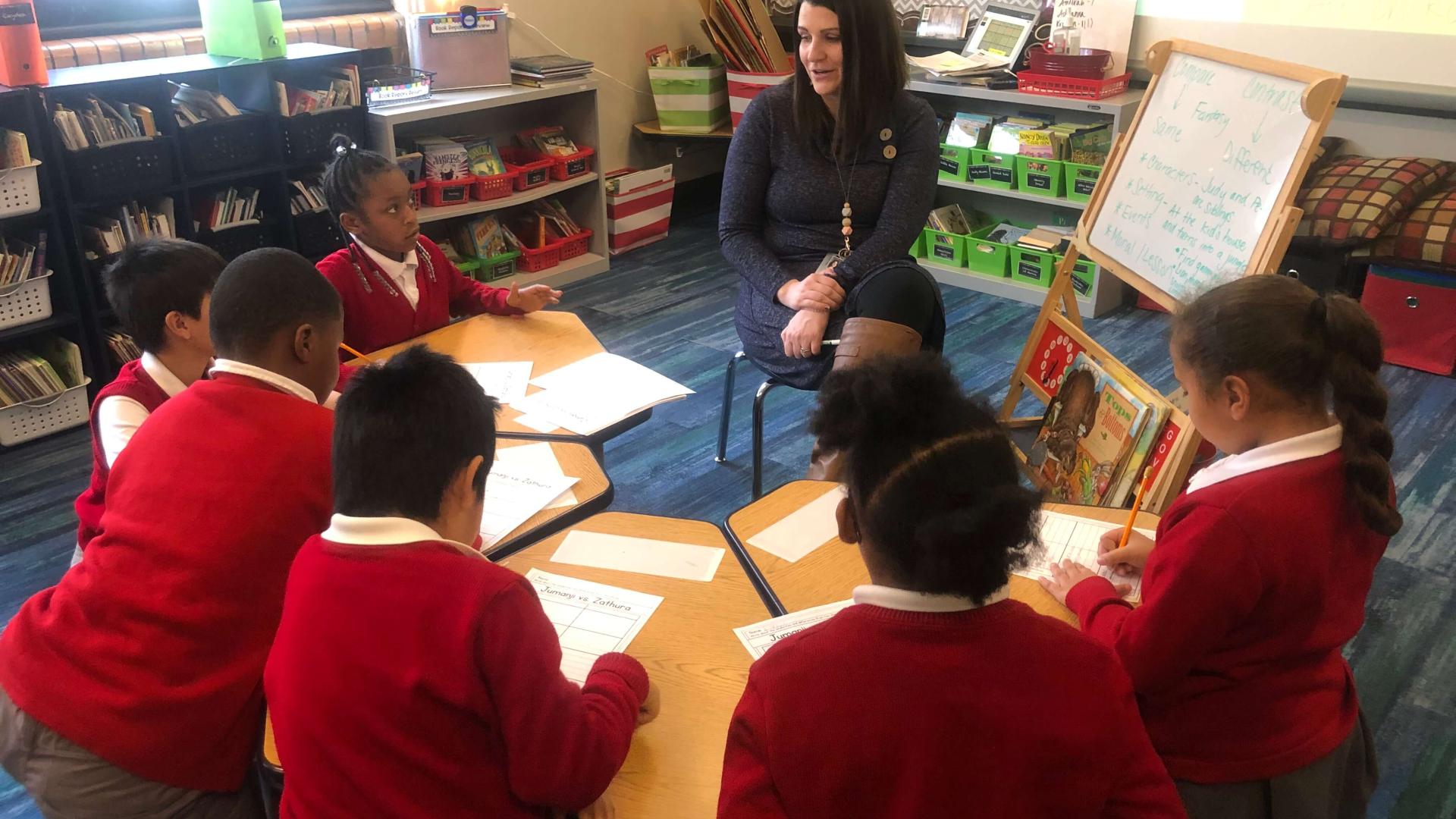The Alliance for Catholic Education’s (ACE’s) Higher-Powered Learning Program is a three-year program guiding teachers and Catholic school leaders through the implementation of excellent and sustainable blended-learning programs. Three to five schools from a diocese are selected to participate as a cohort and each school creates a Blended Learning Advancement and Strategy Team (BLAST), comprised of the school leader(s) and two to four teachers. The BLAST teams then lead the higher-powered learning initiative at their schools.
For BLAST members, the Higher-Powered Learning Program includes 4-7 days of professional development each year as well as coaching calls, professional learning communities, and guided projects throughout the course of the program. This intensive professional development and support empowers the BLASTs to implement blended learning school-wide by the conclusion of this three-year program.
What Makes the Higher-Powered Learning Program Unique?
This program is intentionally designed to develop the internal capacity at each school by empowering teachers and school leaders to make these significant changes while also ensuring that they receive appropriate ongoing support to successfully improve teaching and learning with technology.
We believe in the efficacy of this implementation model for three key reasons:
- A School-Level Nucleus: Unlike traditional professional development in which individual teachers attend programs or enact interventions alone, this program recognizes that a small core of individuals in any organization is necessary to reach a tipping point of change. The shared language and support that each team experiences will increase the probability of the intervention’s success. Developing a school’s internal capacity will allow it to sustain the blended learning initiatives at the conclusion of this program.
- Longitudinal Intervention: In contrast to typical one-off professional development sessions, this implementation model operates longitudinally over three years with multiple in-person and virtual touch points throughout the program, holding teachers accountable for their own growth and keeping them engaged in a supportive and mission-driven professional community of learning.
- Rigorous Evaluation: ACE is fortunate to be located within a top-tier academic university with more than 80 interdisciplinary faculty members contributing to the University’s Institute for Educational Initiatives. The Higher-Powered Learning team calls upon many of these faculty to contribute to research and evaluation in order to ensure that the program effectively serves students and teachers. ACE documents the impact of blended learning on students’ interest and achievement in the hopes of using these results as national proof points for blended learning and for this particular model of expansion.
Higher-Powered Learning Program: Twin Cities, Minnesota
Thanks to the generosity of the GHR Foundation and the Bush Foundation, five schools in the Archdiocese of St. Paul and Minneapolis comprise the first cohort of the Higher-Powered Learning Program:
- Ascension Catholic School
- Community of Saints Catholic School
- Nativity of Mary Catholic School
- St. Alphonsus Catholic School
- St. John Paul II Catholic Preparatory School
 Alliance for Catholic Education
Alliance for Catholic Education
